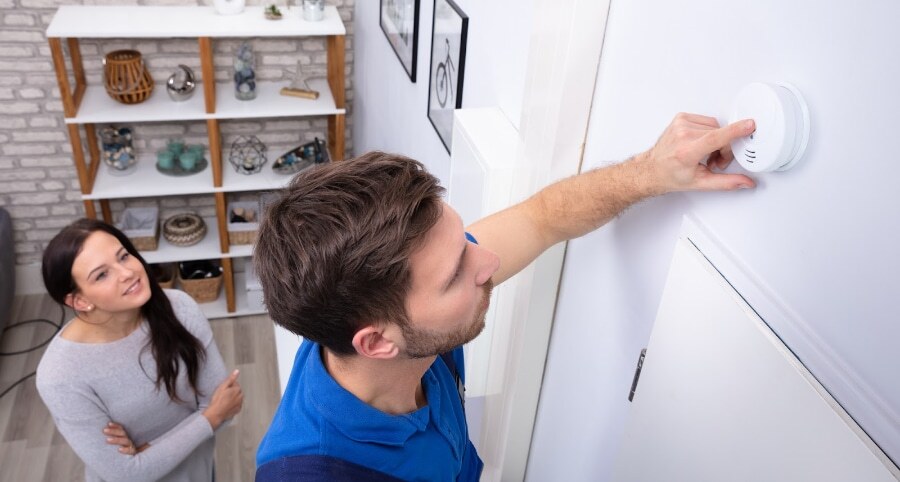Where to install carbon monoxide detectors in your Austin home

Carbon monoxide differs from other threats homeowners encounter as you won’t identify it by sight or smell. Despite the fact it’s not identifiable by your senses like fire, smoke, and flooding, you can still effectively and easly safeguard your family with CO detectors. Discover where to install carbon monoxide detectors in your Austin home and investigate the benefits of including them in your whole-home security plan.
Where will you find CO?
Owing to its absence of color and odor, carbon monoxide has acquired the nickname of the silent killer. It emerges as a result of an incomplete burning of fuels in home appliances like furnaces, generators, fireplaces, and gas stoves. Most people won’t experience issues with their fuel-burning appliances if they maintain them regularly. But if you forget about maintenance or don’t have adequate ventilation, a collection of this potentially deadly gas can take place.
Early signs of CO poisoning include dizziness, headaches, nausea, and vomiting. These typically arise at low concentrations of CO. Exposure to higher amounts for a greater period can result in serious complications and even death.
Suggestions on where to install Austin carbon monoxide detectors
Every home ought to have a minimum of one CO detector. Really, you should install them on each floor, and that includes basements where many fuel-burning appliances are often located. Follow these tips on where to install Austin carbon monoxide detectors:
-
Install one within 10 feet of bedrooms. This placement is most important, so affix it here if you only opt for one carbon monoxide detector.
-
It’s preferred to have a CO detector on each floor of your residence, particularly on floors with fuel-consuming appliances.
-
To prevent false alarms, install them at least 10 feet from sources of carbon monoxide, such as gas stoves. A bit of CO may be released when fuel-burning appliances kick on.
- Avoid placing near windows and doors, as exterior air will lessen the unit’s effectiveness.
-
Put carbon monoxide detectors in areas above garages.
Like you would with smoke detectors, check your CO units per manufacturer guidelines, keep them clean, and avoid unintentionally leaving something in front of them. As a general rule, switch out your detectors every 5-6 years.
Improve safety by integrating CO detectors into your home’s security system
Present-day home security systems offer more functionality than ever before. In fact, you can add carbon monoxide detectors and other safety devices right into your system. You and your monitoring experts will be alerted whenever your alarm detects danger. This type of backup is terrific in the event you don’t hear the alarm or if you’re not there.
Improve safety by integrating CO detectors into your home’s security system
Present-day home security systems offer more functionality than ever before. In fact, you can add carbon monoxide detectors and other safety devices right into your system. You and your monitoring experts will be alerted whenever your alarm detects danger. This type of backup is terrific in the event you don’t hear the alarm or if you’re not there.
Request CO detectors with your Vivint smart home in Austin